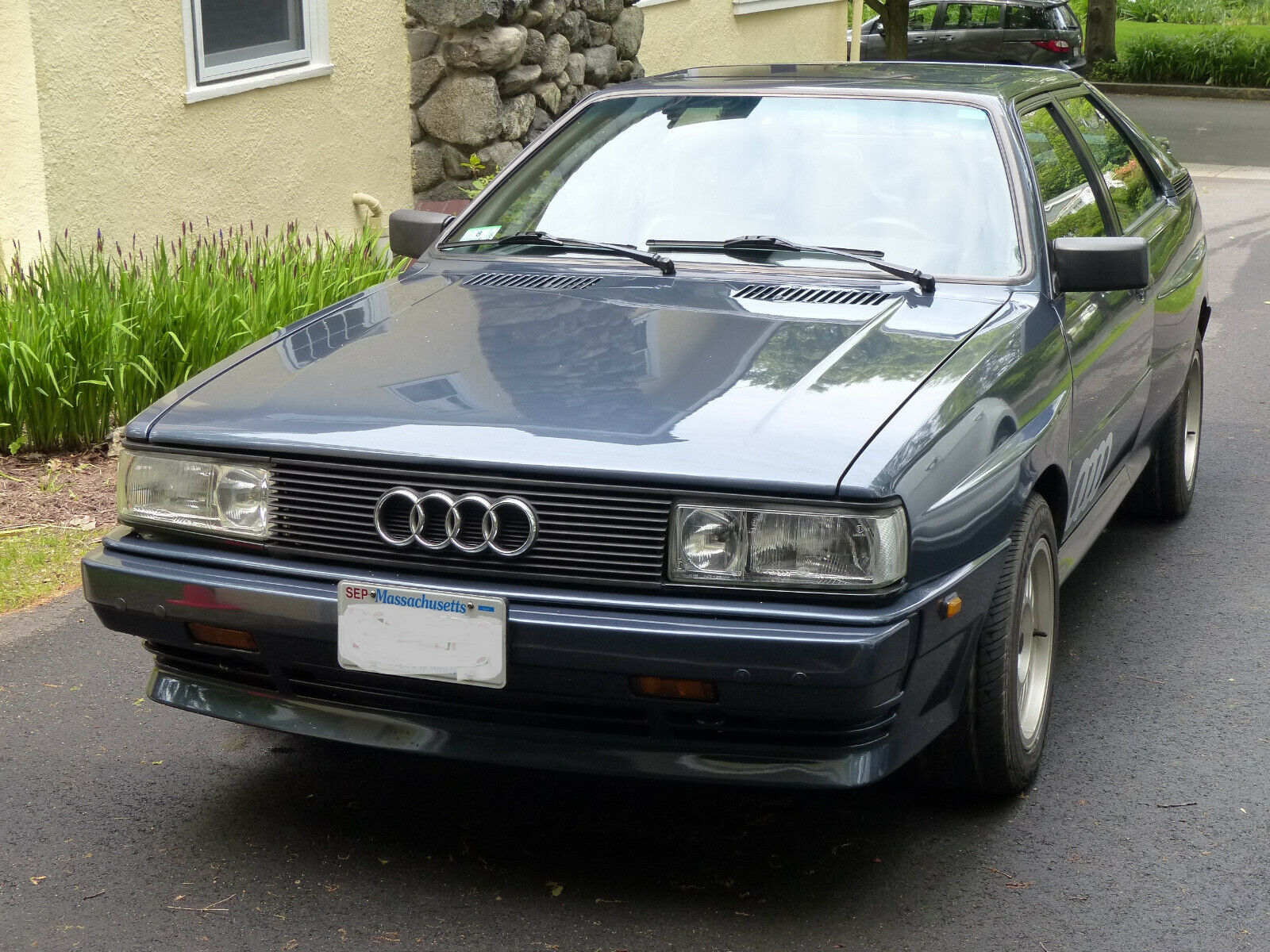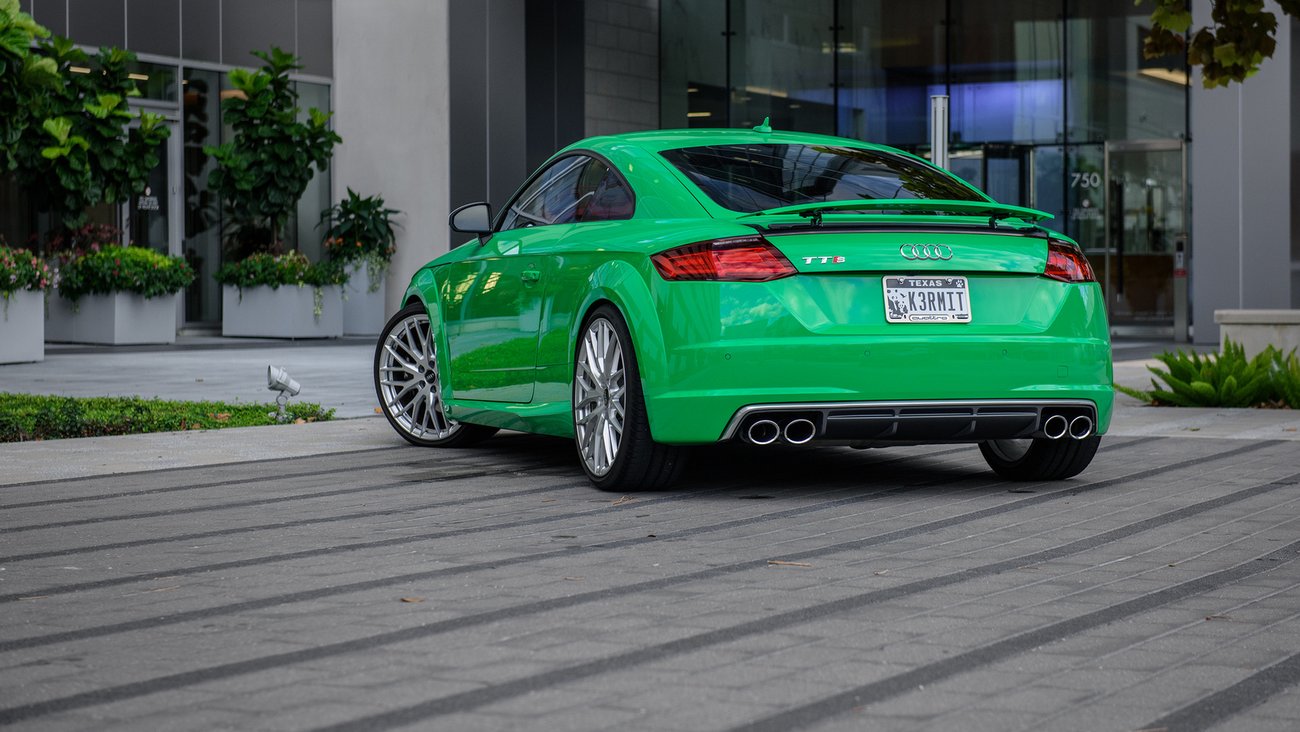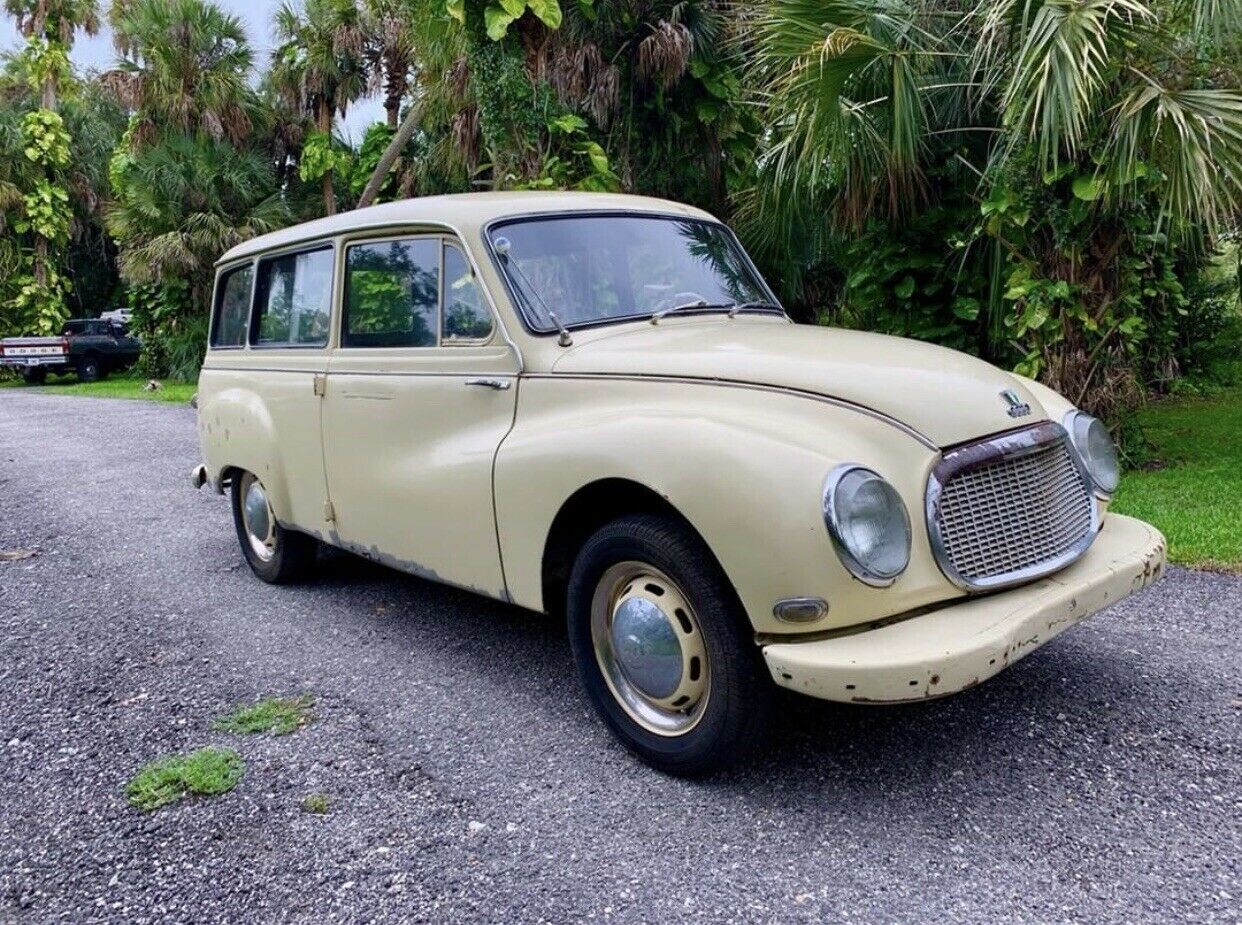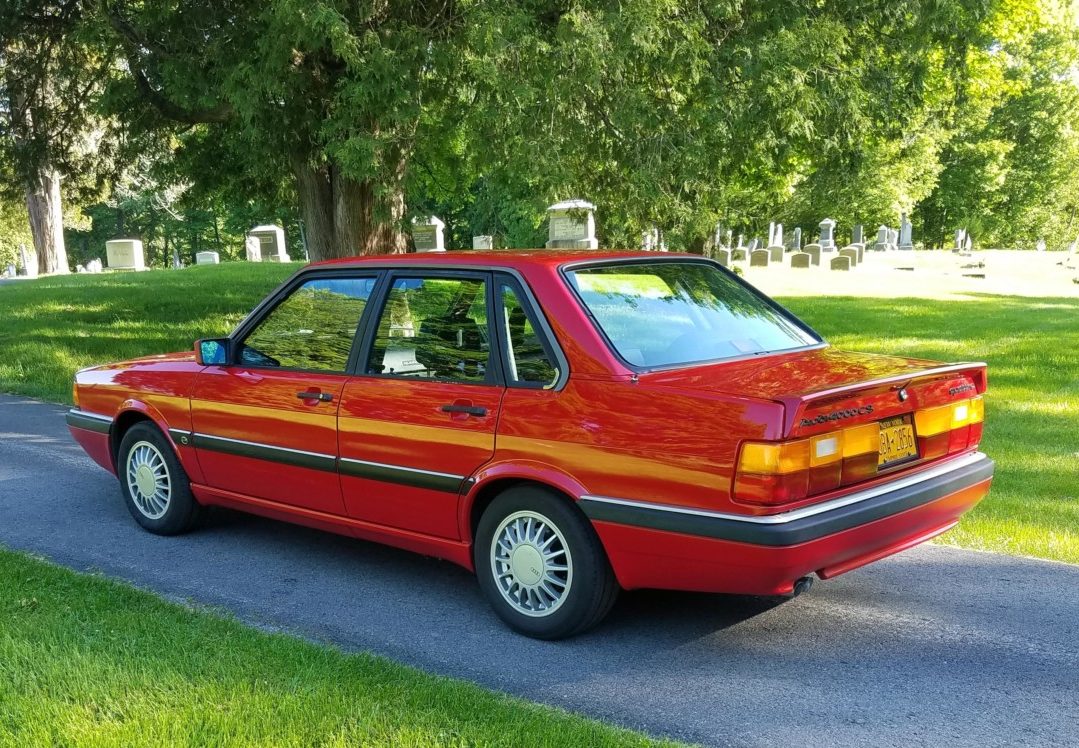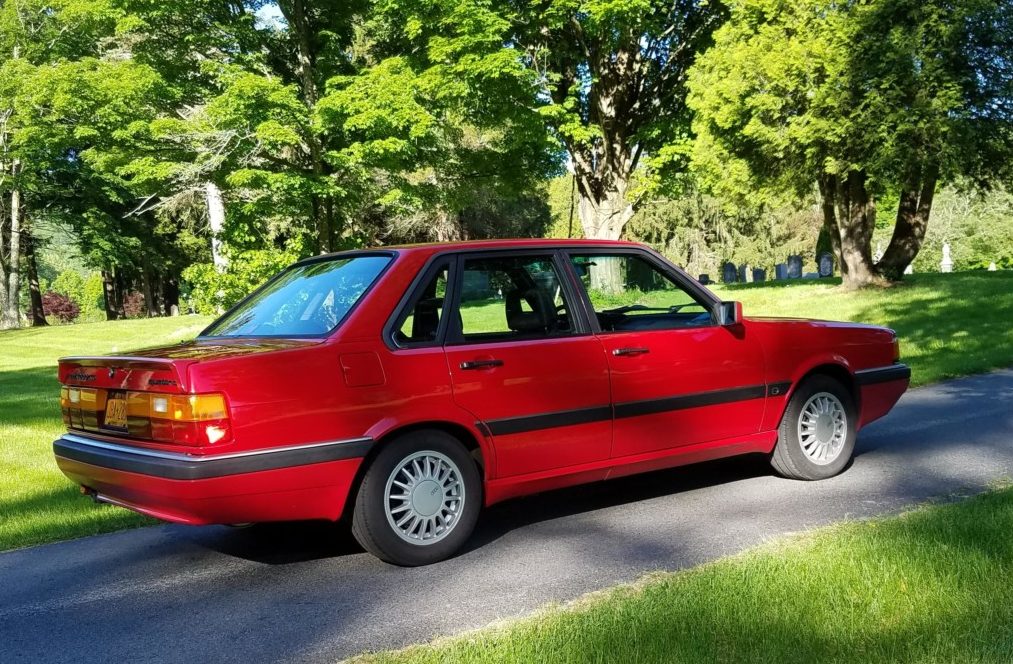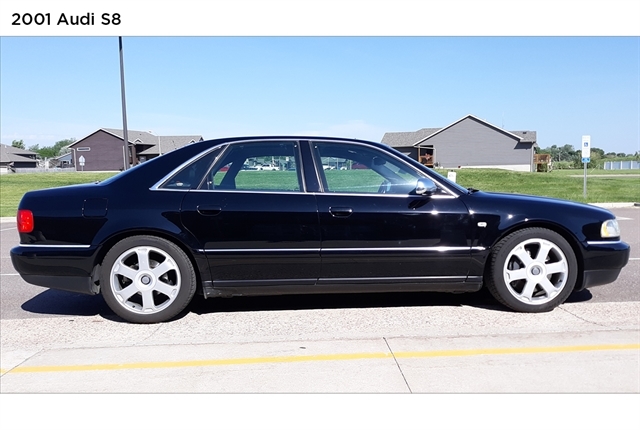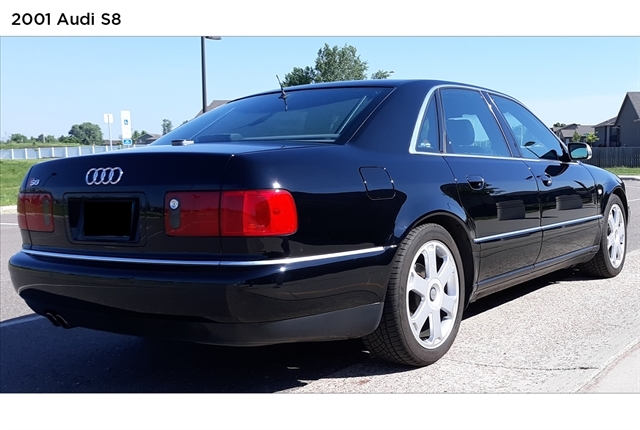We don’t often get to look at 1984 Quattros, and that’s for a good reason. While Quattros are rare stateside full-stop with only 664 brought here originally, just 10% – 65 – were ’84 model year cars. Like ’85, ’84 was a transition year as the newer dashboard, 8″ Ronals and a few other minor changes crept into production. LY5Y Amazon Blue Metallic was offered alongside the Helios Blue Metallic in 1983, but for 1984 it became the sole dark blue offered. It’s a very pretty color, and is here coupled were with some nice and common upgrades to the early cars. Most obvious are the addition of European H1/H4 sloped headlights and grill, which give the Quattro a more updated and aerodynamic look. More subtle is the tucking of the impact bumpers which combined with the headlights give a more Euro feel to this example:
Tag: Audi

The Audi TT is dead. Following the 2019 model year, Audi is pulling the plug sporty coupe because well, no one is buying it. After launching the third generation in 2016, sales were down almost 45% in 2018, and word is that 2019 isn’t looking much better. The world wants SUVs and automakers are listening. I don’t think it has anything to do with the actual car, because the MK3 TT is downright brilliant. The interior with the Audi virtual cockpit is changing the game for every auto marker by putting all the infotainment directly in the gauge cluster to free up the valuable dashboard space. This was even more important in the TT because of it’s size and small cockpit, so even going a step further by putting the climate control dials directly in the middle of the vents was genius. Add in the fact that you can buy a TT RS to run with super cars, and there isn’t much to complain about. As long as you don’t have much stuff, of course.
Today’s car, a 2016 TT S up for sale in Houston, Texas, was reportedly ordered by an Audi executive in Michigan. Naturally, when you have access to special treatment and know money isn’t really an obstacle, you do things like order it in Viper Green and add a bunch of options that suddenly pushes the sticker price north of $60,000. Thankfully for all of us, niche German cars depreciate faster than you can imagine, and you can buy it for a 35% discount.
CLICK FOR DETAILS: 2016 Audi TTS on 6 Speed Online
1 CommentMost German car enthusiasts are no longer familiar with the name “DKW”. It’s a shame considering the long history of DKW, whose name originates from the German Dampf-Kraft-Wagen or “steam powered vehicle” – just to give you a sense of the time period they started out. DKW reached its zenith in the 1930s, a time when Germany was experiencing massive growth in its economy and Hitler wanted to turn the Fatherland into a nation of drivers. Ironically, despite his notable efforts supporting Grand Prix racers and the development of the Beetle, pre-War automobile ownership in Germany was amongst the lowest in all of Europe. They were, rather, a nation of riders – motorcycles, to be precise, buying more of the two-wheeled transport than anyone else in Europe. It was what gave companies like BMW a start, for example, but the most successful of all of the pre-War motorcycle companies was DKW. Upon joining the Auto Union in 1932, they began experimenting more with small cars. But the aftermath of World War II meant that the area that DKW, Audi and Horch – 3/4 of the Auto Union company – were stuck in Soviet controlled areas, most of the factories being disassembled and sent back further behind the Iron Curtain as war reparations.
The result was that in the late 1940s and early 1950s, new efforts to resurrect these names were attempted. It’s not very surprising that the attempts were made; after all, imagine if Chevrolet went out of business due to a War; you can bet once things were cleaned up, someone would try to make a Corvette. And sure enough, based upon some pre-War designs the F89 was born. As with most post-War cars in Germany, it was small, affordable and versatile. DKW utilized the platform to create what was, in essence, the first Audi Avant. The F94 chassis you see here was an updated version of the F89, replete with the 2-stroke 3-cylinder engine that the company claimed gave the power of an inline-6 – hence the paradoxical naming strategy of 3=6 for the Sonderklasse. With a space-saving transverse motor driving the front wheels, there was ample room for flexible seating in the rear. Outside was a reasonably aerodynamic, compact design and the small motor ensured reasonable fuel economy – though no promise of speed. Today, nearly 70 years after the design was first sketched out, finding these Universal Kombis is extraordinarily hard – and when they surface in the U.S., they’re typically not in particularly good shape:
CLICK FOR DETAILS: 1957 DKW 3=6 Universal Kombi on eBay
Comments closedThe Audi 4000 quattro was like a Sherpa to thousands of European car enthusiasts; a steadfast winter standby with slick styling and Rally-bred sure-footedness. On paper, looking back today the 4000 was probably a bit dull; nearly 2,900 lbs of brick-on-brick design with a measly 115 horsepower motivation from the slow-revving oddball inline-5 hanging entirely in front of the forward axleline. But numbers don’t tell the whole story of the B2 Audi, because in any configuration it’s a great handling car. The quattro, however, had some special features that would have been headline items for any sports sedan until very recently; four wheel independent suspension with a large front sway bar and four wheel disc brakes. Couple that with the first all-wheel drive system fitted to a small car, sprinkle some luxury items in and cut the price of the exotic Quattro in half, and it didn’t matter that it wasn’t particularly fast.
What the 4000 quattro was, though, was one solid all-around performer. The subtle changes from the front-drive sedan resulted in a car that felt more grown-up and refined, yet still pushed you to do silly Hoonigan things. 4000 quattro owners that I’ve talked to almost always have the same proud story; the time that they managed to get their 4000 quattro stuck. Normally, that would be a cause for embarrassment, but such was the grip of the plow-through-anything small sedan that it became a badge of honor when you outdid the car’s twin-locking differentials. The secret, of course, was just to make sure all four wheels were in the air! But because of this type of silliness-inducing competence coupled with dropping residual value and a second or third tier of ownership that didn’t always repair or maintain the cars, few are left in good condition. But once in a while one pops up that has you seeing red…LY3D Tornado Red, in this case:
CLICK FOR DETAILS: 1987 Audi 4000CS quattro on Bring A Trailer
3 CommentsIf you follow these pages, it goes without saying that I’m a pretty strong Ingolstadt devotee. My first car was an Audi 4000CS quattro and since then I’ve owned an absurd 9 models along the way. But that doesn’t mean I buy everything from the company hook, line and sinker. Indeed, I’ve been less than impressed with many of the newer models. Sure, sometimes they look slick, go like stink or are really pretty inside. But would I want to own one? In most cases, no – outside of a few very select models, I don’t really desire to own much post ‘Y2K’.
One exception to that rule – and it’s literally and figuratively a huge exception – is the S8. Everything about this car was just spot on to me. In an age when increasingly the offerings from the competition were unattractive and overly complicated, the S8 was to me the last of the great original quattros. It was an analog offering in a digital age; simple, blunt force from a 360 horsepower V8 in front driving all the wheels with a luxurious driver-oriented cockpit. Sure, there were plenty of computers. Probably there are too many. But compared to the new luxo-suites? The D2 seems downright cart-like. And the proportions of the car were just perfect; lowered, menacing stance, huge yet delicate-appearing wheels, just the right amount of bling, yet an understated car which easily fades into the background. So even though I’m still probably a long way from ownership, I often find myself dreaming about being behind the wheel of one.
The pool of candidates that remain is beginning to dwindle; the newest of the D2 S8s are now 16 years old and parts are already getting hard to source. Getting into an enthusiast owned one is the way to go at this point, but that doesn’t automatically mean it’ll break the budget:

